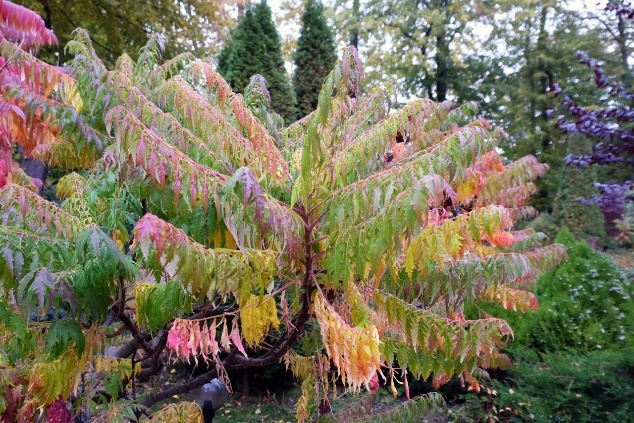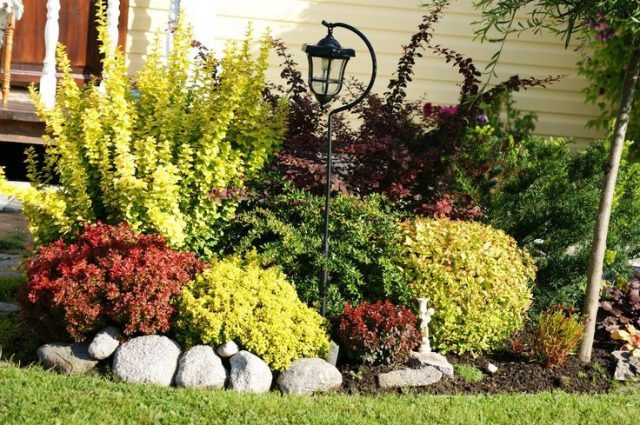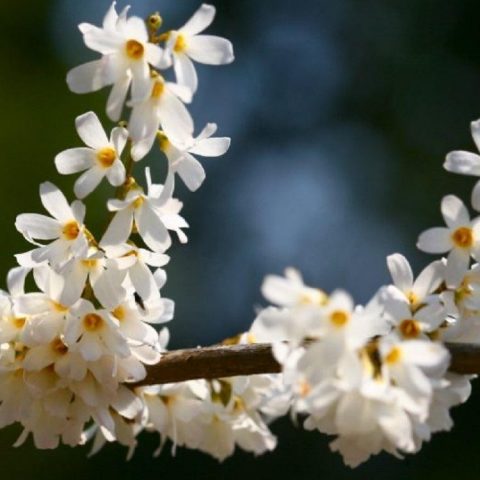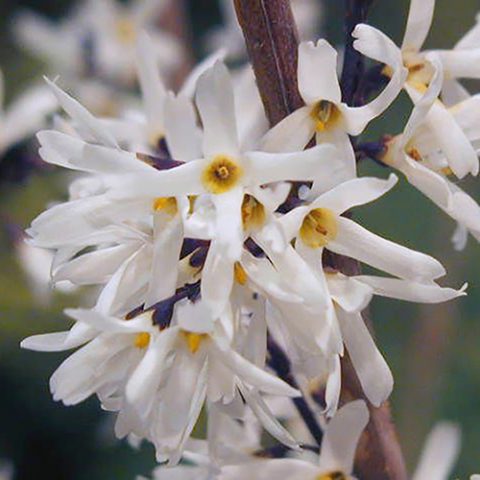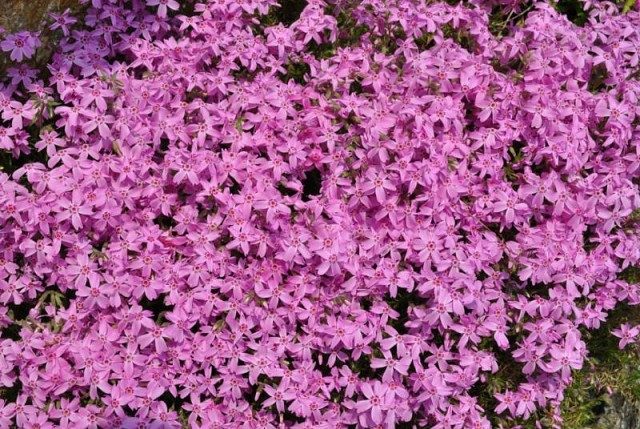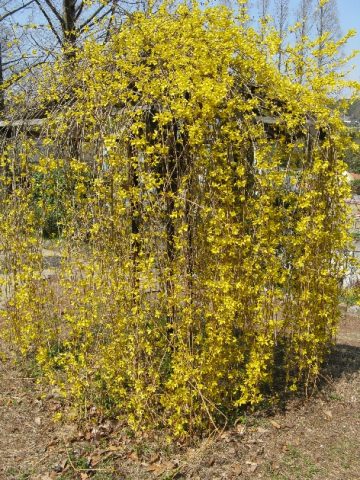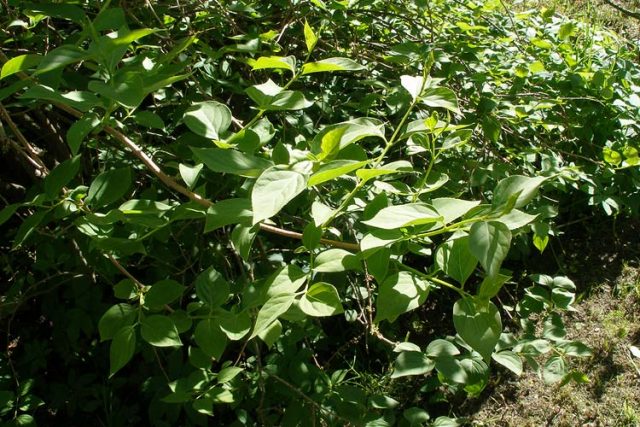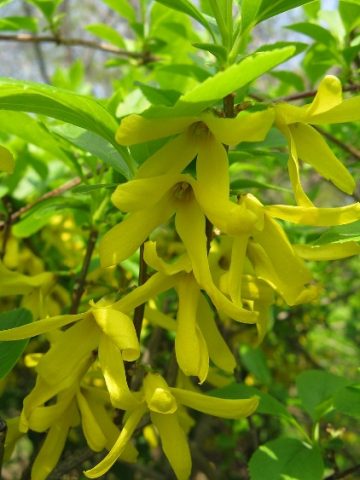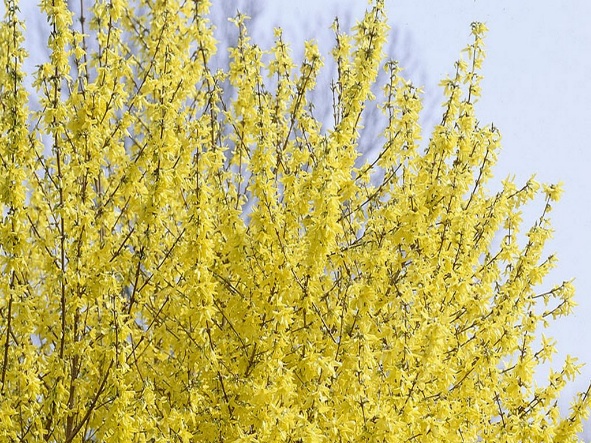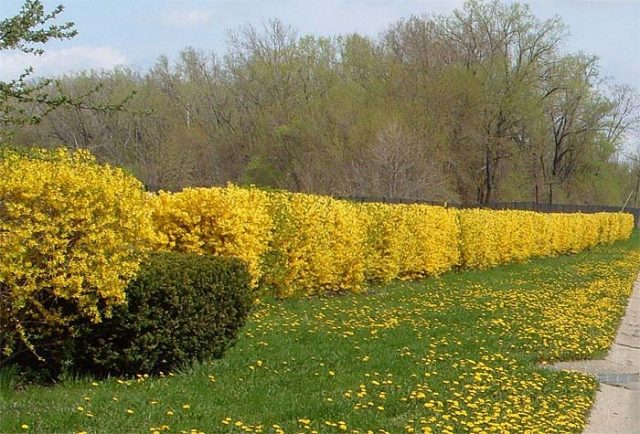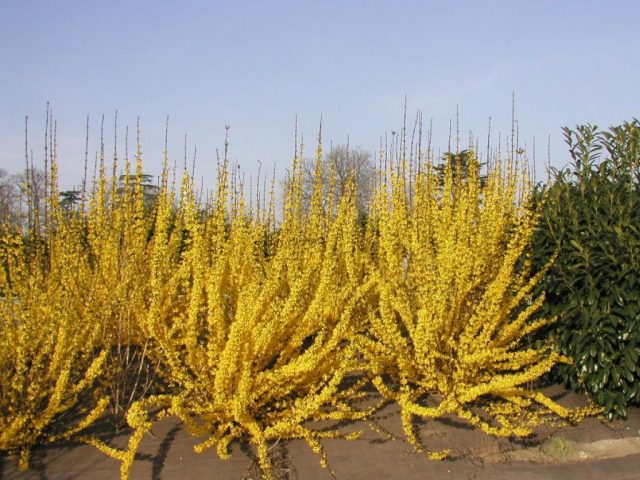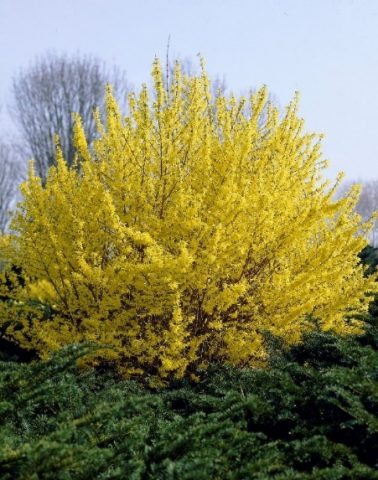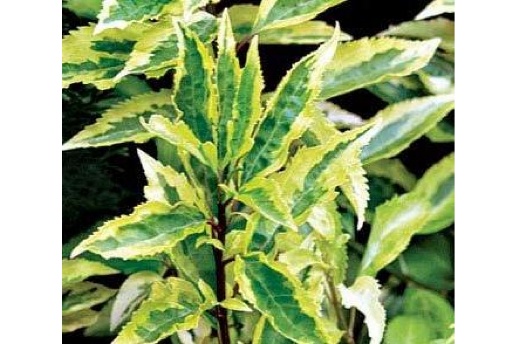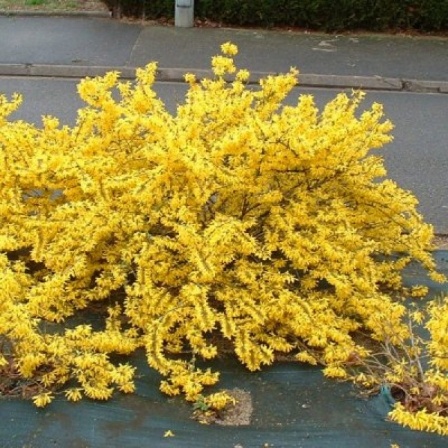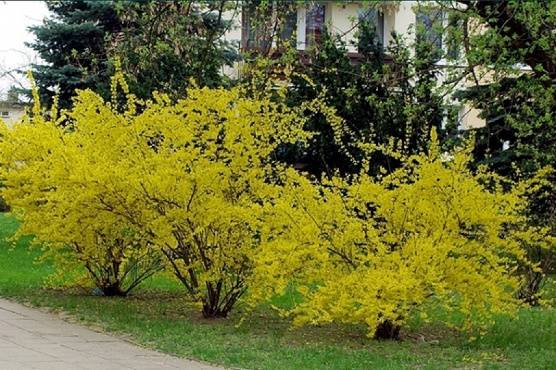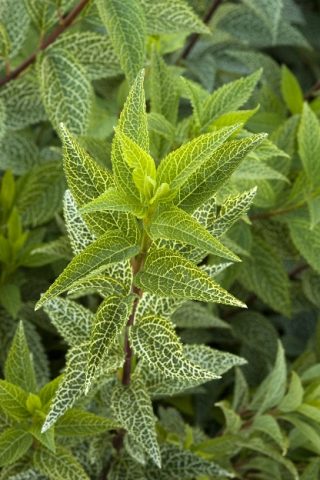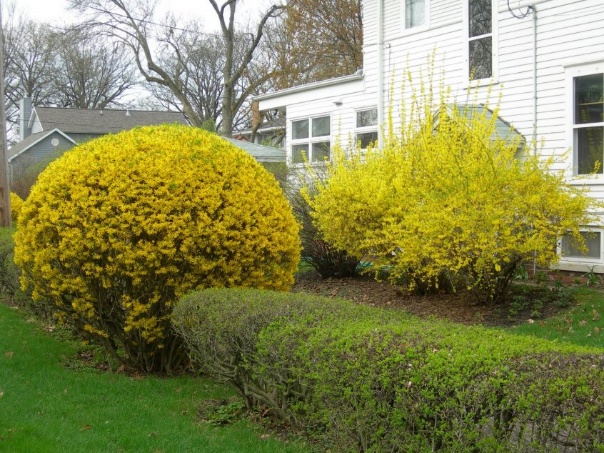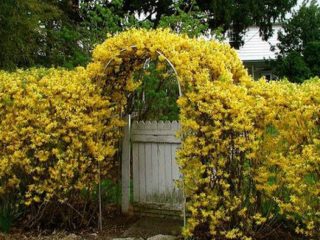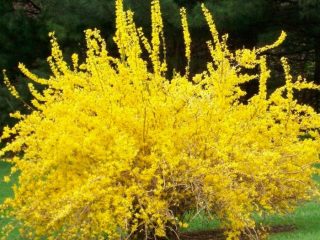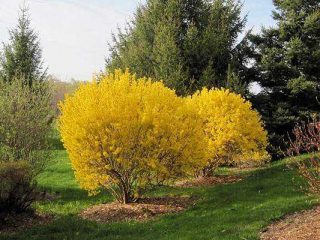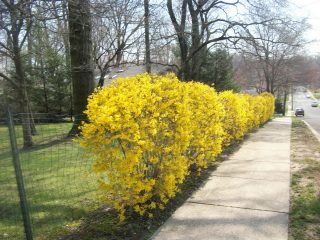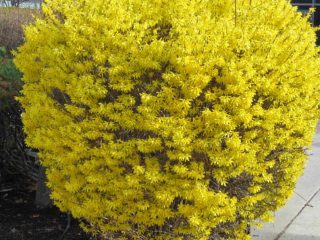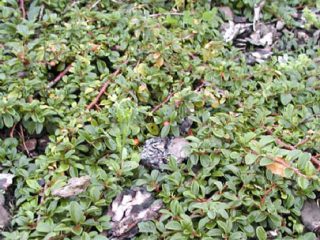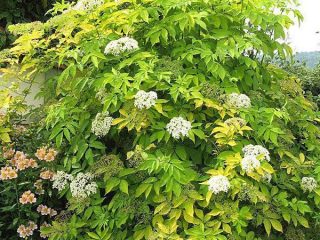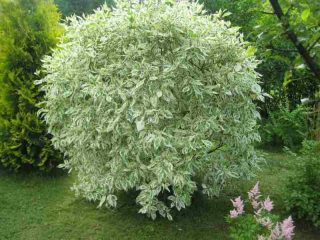Content
- 1 Forsythia
- 2 Forsythia in landscape design
- 2.1 Forsythia white
- 2.2 Forsythia pink
- 2.3 Forsythia variegated
- 2.4 Hanging forsythia
- 2.5 Forsythia ovoid
- 2.6 Forsythia is greenest
- 2.7 Hybrid
- 2.8 Intermediate forsion
- 2.9 Forsythia Spectabilis
- 2.10 Forsythia Weekend
- 2.11 Forsythia Minigold
- 2.12 Forsythia Golden Time
- 2.13 Forsythia MeliD'Or
- 2.14 Forsythia Beatrix Farrand
- 2.15 Forsythia Goldsauber
- 2.16 Forsythia Coomson
- 2.17 Forsythia Goldraush
- 3 Care features
- 4 Conclusion
Forsythia is not the name of a single plant, but of a whole genus of small trees and shrubs. Some species of this genus were cultivated, garden varieties were bred from them, and even hybrids were created. In other species, wild forms of shrubs are grown in gardens. A photo and description of the forsythia shrub will help you choose the right variety for decorating your garden.
Forsythia
Other readings of the name of this genus of plants: forsythia and forsythia. In total, the genus includes 13 species. Some of the species are frost-hardy enough to be grown in Central Russia. Most often, European forsythia is grown in gardens - a shrub with yellow flowers. This species is quite ancient and is able to grow in different climatic conditions. Other types of forsythia are also used to decorate the garden.
The length of the leaves of the representatives of the genus is from 2 to 15 cm. Flowers are usually yellow, with an accrete corolla. Flowers can be short-columnar or long-columnar. For propagation by forsythia seeds, cross-pollination is required between the two flower varieties. The absence of one of the forms explains the poor setting of seeds when growing shrubs in gardens.
Forsythia in landscape design
The most popular in landscape design are two types: European and Giralda's forsythia. Shrubs reach a height of 2 m. Both forsythia bushes with yellow flowers. In addition to them, two varieties with white and pink flowers can be used. Some types of shrubs and hybrids are prized for their unusual ornamental foliage.
Shrubs quickly recover after cardinal pruning: during the summer, the shoots grow to their previous length. This property provides the landscape designer with unlimited creativity. A photo of a properly trimmed forsythia in landscape design will leave few people indifferent.
The choice of plants when forming a garden can present certain difficulties. Some shrubs are better suited to form a green wall or hedge. Others will look better in flower beds. Still others need to be left in "splendid isolation" so that they do not get lost among other shrubs and trees. Some types and varieties of forsythia with descriptions and photos are presented below. But only a few. The choice of these plants is much wider.
Forsythia white
White forsythia (Forsythia abeliophyllum) belongs to ornamental trees and shrubs. It goes well in composition with other varieties of this genus. The flowers have a very pleasant aroma and attractive decorative foliage. But you need to select the varieties of bushes so that the white forsythia is combined with them in height.
The height of an adult bush is 1.5 m. It grows for about 10 years. The bush is compact. Flowers bloom in early spring. The usual color of flower petals is white, but sometimes it can have a pink tint. By Russian standards, it is not particularly frost-resistant. It can withstand up to - 6 ° С. For growth, he prefers sunny areas protected from the cold. Suitable for a small garden or growing in a large pot on a patio.
Forsythia pink
The plant got its name for its pink flowers, to the color of which a lilac shade is sometimes added. The petals are very delicate in appearance, elongated, thin.The shrub is well suited for urban conditions, as it is resistant to urban smog. But the plant is demanding on the soil. It will not grow in poor, acidic, heavy or salty soil.
The shrub is quite picky about care. He needs anti-aging pruning every year. With this rejuvenation, the branches are cut off by a third of the length. Capital rejuvenation "on the stump" is carried out every 3-4 years.
Forsythia variegated
The Latin name is Forsythia Variegata. The main advantage of this shrub is not flowers, but bright decorative foliage. Variegated forsythia gradually changes the color of the leaves from light green to golden yellow. This shrub will look good among dark green spruces or thujas. But it must be borne in mind that the height of this variety is small: up to 1 m. The width is limited to 1.2 m. The shrub has a natural rounded shape.
It blooms in May with yellow flowers. But the plant often freezes in winter, as it does not differ in cold resistance. Picky about the soil.
Hanging forsythia
She is a drooping forsythia (Forsythia suspensa). Most shrubs of this genus have strong branches sticking up. Weeping forsythia is a 3 m high bush with long thin branches, curving downward under their own weight.
It is advisable to plant this type separately or to make trellises for bushes. On the props, the stems of the shrub rise above 3 m, forming spectacular golden walls in spring.
Grows well in the southern regions of Russia. It is considered frost-hardy, but already in the area of the Moscow region it winters only under cover.
Forsythia ovoid
A native of the Korean Peninsula. The correct name for this species is "oval-leaved" (Forsythia ovata). Forsythia got its name for oval leaves. The sharply pointed tips break the harmony.
The length of the leaves of this type of shrub is 7 cm. In summer they are dark green, in autumn they turn dark purple with an orange tint. Flowers up to 3 cm in size, dark yellow.
The height of an adult bush is from 1.5 to 2 m. The variety is undemanding to soil and can grow even on scarce land. But it fully "opens up" on fertile soil. This is the most winter hardy of all garden varieties. But in landscape design it is rarely used.
Forsythia is greenest
She is greenest because her foliage is dark green. The shrub has a more correct name: dark green forsythia (Forsythia viridissima). This is one of the first species introduced to Europe. Discovered in East China.
The bush grows vertically. The leaves are narrow, serrated in the third closest to the base. Flowers are yellow... This species is considered to be thermophilic. In Finland, it is most common, since there it cannot winter without shelter. But even there, dark green forsythia bloomed for several years. The place for planting "curiosities" was chosen protected from the cold.
The dark green forsythia got the opportunity to bloom in the northern country due to its late ripeness. This species blooms last of all varieties of the genus and avoids spring frosts.
Hybrid
Sometimes the greenest forsythia is called a hybrid of this species with the Korean form. It is a short shrub up to 1.5 m high. Flowers are rich yellow. The foliage is very decorative: bright green with creamy white veins. The hybrid looks very good on dark green conifers. Due to crossing with Korean forsythia, Kumson has good frost resistance, but prefers sunny places.
Intermediate forsion
Forsythia intermedia is the result of crossing drooping and dark green forsythia (Forsythia viridissima x Forsythia suspenca). The height of the shrub is up to 3 m. The branches are straight or slightly curved downwards.Blooms in late April - early May. Does not differ in frost resistance. Possesses good rooting rate of cuttings.
Forsythia Spectabilis
A tall, spreading shrub up to 2.5 m in height. Crown diameter up to 2 m. Flowers are yellow, completely covering the shoots. Leaves are green, turning yellow, orange or purple in autumn. The edges of the leaves are serrated. Blooms in the 3-4th year of the shrub's life. Blooms from late April to early May. Relatively cold-hardy, suitable for growing in the 5th zone of winter hardiness. In the middle lane requires shelter for the winter.
The plant does not like drought and needs regular watering. Prefers fertile land.
Forsythia Weekend
Shrub up to 2.5 m. The crown is columnar. The trunk is brown. Flowers are yellow, densely cover the shoots. Early ripe variety: blooms in March-April. The foliage is green or light green in summer. In autumn it becomes yellow, red or green. The life of the bush is 100 years. Photophilous. Very hardy variety. Withstands temperatures up to - 23 ° С.
It grows by spontaneous grafting, when the shoots bend to the ground and take root. Grows in moist soil of any quality.
Forsythia Minigold
Low shrub up to 1.5 m. Crown diameter no more than 1 m. Blossoms in April. Length of dark green leaves 10 cm Looks good in single and group plantings. Unpretentious care. Grows slowly and shading slows growth. You need to plant this form in a well-lit place.
Cold resistant. Able to winter under the snow. Requires daily pruning and feeding.
Forsythia Golden Time
Tall hybrid, reaching 3 m. The diameter of the Golden Times forsythia crown is 2 m. It blooms in early spring. The flowers are yellow. The value of this hybrid is in its decorative foliage. Elongated, simple leaves have a bright green center and a wide yellow border around the edges. The hybrid is relatively winter-hardy, but in severe frosts, the ends of the shoots can freeze out.
Forsythia MeliD'Or
Miniature spherical shrub with a crown width and height of no more than 1 m. Height can sometimes be less than width. Abundant flowering. In autumn, the green foliage turns crimson.
Prefers well-lit areas and moist fertile soil. Due to the uniform growth of shoots, it needs minimal maintenance. Pruning is carried out every 3-4 years.
Forsythia Beatrix Farrand
Very large, tall shrub. At a height of up to 4 m, the crown diameter is 3 m. It grows rapidly. The annual growth of shoots is 30-40 cm. It blooms in April-May with bright canary-yellow flowers. The length of the leaves is 8 cm. The color is dark green, yellow in autumn. The shape is oval-pointed. Small teeth on the edges.
Optimal landing site in partial shade. Drought-resistant. Prefers fertile land. Heat-loving. For the winter, it requires a mandatory shelter.
Forsythia Goldsauber
Medium-sized shrub up to 2 m in height. At 8 years old, with a height of 1.7 m, crown diameter 0.9 m. Then it grows wide. The growth rate is average. This form has the largest flowers. Leaves are bright green, turning purple-orange in autumn. Vegetative period: end of April - end of October. Blooms at 4 years old. Flowering time 20 days from late April to mid-May.
It is thermophilic, does not tolerate frost well. Prefers sunny locations and moist soil. Unpretentious. Easily tolerates mild drought. It can grow on any soil.
Forsythia Coomson
Spherical shrub 1.5x1.5 m. The branches are drooping, spreading. Abundant flowering. Leaves are oblong, pointed. Color from dark green to light green. Golden veins give a special decorative effect to dark green leaves.
Prefers sunny locations, but can grow in partial shade. Not demanding on the soil. Korean forsythia Kumson has good winter hardiness, but it can freeze under severe cold weather. Easily recovers after freezing and pruning.
Forsythia Goldraush
Medium-sized hybrid shrub with early flowering.Blooms in March in the absence of leaves. New shoots and leaves appear after flowering. Plant height up to 3 m. Crown diameter 2.5-3 m.
Care features
With proper care, forsythia turning green in the garden pleases the eye even in summer after flowering. In autumn, the multicolored foliage makes these plants even more elegant. But for this, the bush must be monitored and properly looked after.
Most species need annual pruning. An uncut shrub looks very unkempt and is not suitable for garden decoration. A properly designed bush fits well into the composition. The shrub can be made round if the plant is used for a flower bed, or rectangular when forming a wall.
The shrub is unpretentious, but for a beautiful and abundant flowering, it requires annual fertilizing. Plants prefer moist soil and regular watering.
Due to the low resistance to frost, flower buds freeze out in uncovered bushes and in spring the forsythia is not able to bloom. Therefore, for the winter, the bushes must be covered.
Seeds when grown in the garden are difficult to obtain, but the bushes reproduce well by cuttings.
Conclusion
The photo and description of the forsythia shrub given in the article will help you get an idea of how this or that form will look in the garden. When drawing up a landscape design plan, it is necessary to take into account the characteristics of each of the plant species.

